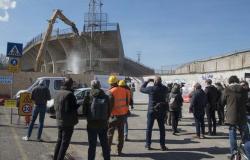After three years of careful evaluation, the project promoted by Publiacqua and WWF to protect biodiversity in the Florentine area is coming to life in recent days, starting from three fundamental infrastructures for water treatment: the water purification plant Anconella, the Mantignano aqueduct and the San Colombano purifier.
The idea is to enhance the fauna that already exists in the city, using the large parks surrounding the water treatment plants as a “refuge”.
«We have noticed that the areas around the plants are affected by human activities, but in times and ways with less impact than the surrounding city territory – explains Carlo Scoccianti, biologist responsible for the project for WWF Tuscany – in simple words here insects and animals can find more peace of mind, so we thought of simple actions that help safeguard the various species. These are choices that generate environmental advantages and at the same time economic savings, which is no small matter.”
It is therefore a question of implementing micro-works that will make it possible to protect the species present in the surroundings of water systems. As? For example, the wood waste obtained from the safety of trees, instead of being sent for expensive disposal, becomes a natural refuge which biodegrades over time and enriches the soil. On the other hand, the reduction in grass cutting works, where safety problems do not arise, gives rise to lower expenditure on greenery maintenance and at the same time creates a suitable habitat for many pollinating insects.
«In the city it is difficult to talk about biological diversity, since this environment is rather inhospitable for animals. However, there are some species, which, although limited in number, have adapted to this particular ‘habitat’, I am thinking for example of swallows, nocturnal birds of prey, herons, small amphibians. Our aim is to enhance their presence, enhancing the natural shelter functions that the green areas around the Publiacqua plants have”, argues Scoccianti.
Thus tidy piles of wood, obtained from pruning trees, which become natural “condominiums” for minor fauna, such as lizards and insects, or delayed mowing of vegetation in large green areas to allow the flowering and life of pollinators, from bees to butterflies.
These are two of the solutions already introduced between Anconella, Mantignano and San Colombano, but as part of the Publiacqua and WWF biodiversity project, new activities are already being studied, from the creation of bat boxes for bats, species that perform very important functions in the ecosystem, to the installation of nest houses to shelter the ornithological fauna present in the area.





